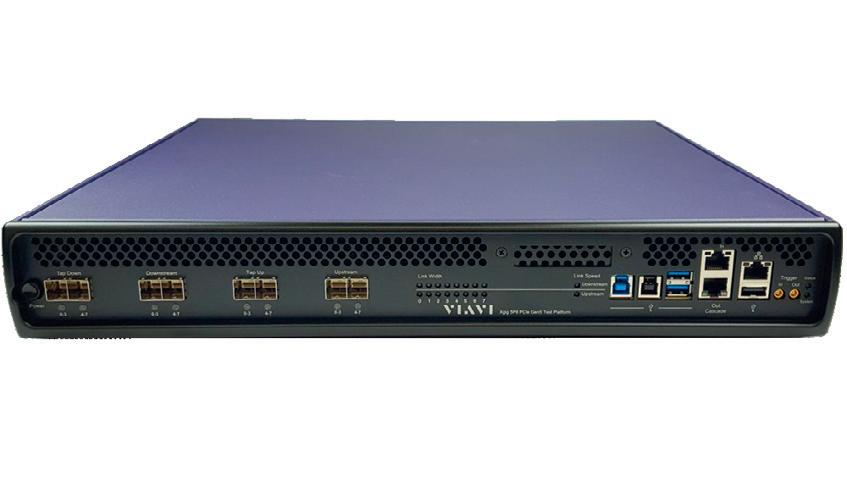
9 minute read
Smart tech minimises power outages in homes
Smart technology that allows utility companies to better serve dwellings and communities affected by power outages has been designed by researchers at Texas A&M University.
The device works by improving energy delivery between home solar-power systems and the electrical grid.
“Our innovation lets solar energy consumers be less dependent on the external power grid. The same technology also allows the utility company to control energy distribution, which is particularly useful during power outages caused by storms and other natural disasters,” said Dr Le Xie, professor in the Department of Electrical and Computer Engineering.
“So, it’s a win-win scenario for both the consumer and the utility company.”
The study was published online in the Institute of Electrical and Electronics Engineers’ Journal of Emerging and Selected Topics in Power Electronics in April.
Over the last decade, a sharp drop in the cost of solar panels has encouraged more households to adopt solar power systems. In these homes, the current generated by rooftop solar panels is fed into an inverter before the electricity is ready for residential use and charging solar backup batteries. Another set of power electronics connects the solar panels and the batteries back to the grid.
©iStockphoto.com/Baris Simsek

These connections ensure that homes are always connected to the grid as long as the grid is functional. During the day, homes consume more solar energy, and any excess energy is supplied to the grid. At night, homes draw electricity from the grid.
The researchers noted that these conventional systems have many disadvantages. Any voltage fluctuations in the grid, due to damage to the powerlines or overloading, affects connected devices in homes. Also, they said the current injected into the grid from solar-powered homes can have certain irregularities, known as harmonics, affecting the quality of the power within the grid.
The researchers said another pertinent problem is there is little that a utility company can do to limit the amount of grid electricity consumed by solar-powered homes. This drawback is particularly harmful during natural disasters where other communities or essential services, like hospitals, need energy support.
“Currently, there’s no system in place to regulate or limit energy consumption,” said Dr Prasad Enjeti, TI Professor III in Analog Engineering in the Department of Electrical and Computer Engineering.
“End users with solar-powered systems continue drawing electricity from the grid because utility companies have no way of controlling it.”
Unlike the conventional solar-powered systems that involve many electronics to connect back and forth from the grid, the researchers put together a single device, called the power electronics intelligence at the network edge, or PINE. This device, which is installed outside a home, has three main connections: one going to the home, one to the utility grid and another to the solar panels and batteries. PINE can control the flow of electricity in any one of these directions.
“This device is like an intelligent energy router,” Enjeti said.
“It regulates the grid voltage, integrates solar energy, which is locally produced, and intelligently manages and routes the energy in all directions.”
The researchers designed this device to also be programmable, so that an authorised external user, like the utility company, can control the amount of grid electricity reaching solar-powered homes. Enjeti said PINE systems installed at different homes can also be programmed to communicate with each other and with the distribution operator.
To test if the PINE networks will operate as envisioned, the researchers built a hardware prototype and conducted extensive computer simulations of a mixed neighbourhood in which some homes had PINE systems and others did not. The hardware performance along with simulations revealed that the homes with the PINE system had a cleaner, more stable voltage. At the grid level, the injected voltage from these homes was also stable because the PINE system was regulating that as well.
“PINE systems can dynamically and in real time inject different voltage support to the utility grid. So, the utility companies need not spend millions in buying capacitor banks to support the voltage across the feeder lines,” Xie said.
“During power outages, PINE allows homes to be self-sufficient and use their solar power efficiently. The technology also allows the utility company to wirelessly instruct PINE systems to limit the grid current to solar-powered homes and redirect it to other affected areas.”
Stainless steel industrial enclosures The EJSS family of enclosures from Hammond Electronics is available in 304 or 316 grade stainless steel, supplied in a natural smooth brushed finish. Sealed to IP66, the series is designed for use as an instrument enclosure; an electric, hydraulic or pneumatic control housing; an electrical junction box; or a terminal wiring enclosure.
In applications such as food processing, a formed lip on the enclosure diverts flowing liquids and contaminants away from the seamless poured-in place gasket in the door, enabling it to be hosed down during cleaning. Stainless steel is also a suitable material for installation in areas where corrosion may be a problem.
The EJSS family is available in 22 sizes, ranging from 102 x 102 x 76 mm to 406 x 356 x 254 mm. All but the two smallest sizes are supplied complete with a 1.6 mm-thick internal unpainted galvanised steel panel. The series meets IEC 60529 IP66 for European and CE, UL and NEMA 3R, 4, 4X, 12 and 13 requirements for North American markets.
The body and cover are formed from 1.3 mm stainless steel with smooth, continuously welded seams without knockouts, cutouts or holes. Integral heavy-duty, full-width top and bottom brackets facilitate mounting the enclosure to an external surface. The cover, mounted on a heavy-duty continuous hinge, opens through 180° for good access; a quarter-turn latch prevents casual unauthorised access by requiring a tool for operation. A bonding stud is provided on the door and a grounding stud is fitted to the enclosure.
Hammond Electronics Pty Ltd
www.hammondmfg.com

Rackmount on-line UPS The Vertiv Liebert GXT5 rackmount online UPS is designed to ensure availability within mission-critical small IT environments and edge locations that enable important emerging applications — such as 5G, virtual and augmented reality, and the Internet of Things.
The UPS has a power factor of 1.0 on all models, providing more real power for the user, and is more efficient in both online (up to 95%, according to the company) and Active ECO mode (up to 98%). All models are ENERGY STAR 2.0 certified, and are currently available in capacities from 750 VA to 10 kVA, 230 V.
The product offers a three-year full coverage factory warranty for the UPS and battery. The system also is available with the company’s extended warranty and other service packages to support individual user needs.
Vertiv Co
www.vertivco.com
Smart PV solution Trina Solar has introduced the TrinaPro Mega, an ultrahigh-power smart PV solution featuring modules with power output exceeding 500 W.
With further improvement in product selection and integrated design, the solution is designed to enhance the overall system performance and reduce the levelised cost of energy (LCOE).
The product provides users with customised solutions to ensure system efficiency.
Trina Solar
www.trinasolar.com.au Protocol analyser for PCIe 5.0 Component manufacturers need test platforms that will validate performance according to the PCIe 5.0 standard, while maintaining familiar user interfaces and management environments to minimise training needs and start-up costs. VIAVI Solutions has now introduced the Xgig 5P8 Analyzer Platform for PCIe 5.0, allowing equipment manufacturers to ensure performance in accordance with the latest revision of the ubiquitous serial computer expansion bus standard.
The product provides protocol analysis for PCIe 5.0 traffic at all layers of the protocol stack. It supports link widths up to eight lanes and link speeds to 32 GT/s, and provides both PCIe and NVMe protocol analysis functions as well as full downward compatibility to PCIe 4.0. It also connects with other VIAVI analysers designed for protocols such as Ethernet, SAS and FC to provide time correlated multiprotocol views.
The product chassis has 128 GB of memory and flexible allocation to capture and save multiple data traces. The chassis provides advanced PCIe and NVMe level trigger and search capabilities designed to speed debug and problem resolution time. Interposer autotuning should simplify and speed up system use, as well as enable repeatable capture results.
VIAVI Solutions Inc
www.viavisolutions.com.au

CASE STUDY
100% green power for City of Sydney
The City of Sydney was 100% powered by renewable energy from July 2020.
This renewable power is generated from wind and solar farms in regional NSW.
Valued at over $60 million, it is one of the biggest green energy deals of its kind by a council in Australia.
All the City’s operations — including street lights, pools, sports fields, depots, buildings and the historic Sydney Town Hall — will now be run on 100% renewable electricity from locally sourced clean energy.
The switch is projected to save the City up to half a million dollars a year over the next 10 years, and reduce CO 2 emissions by around 20,000 tonnes a year — equivalent to the power consumption of more than 6000 households.
Lord Mayor Clover Moore said the new agreement will generate jobs, support communities impacted by the COVID-19 pandemic and create new opportunities in drought-affected regional NSW.
“We are in the middle of a climate emergency. If we are to reduce emissions and grow the green power sector, all levels of government must urgently transition to renewable energy,” Moore said.
“Cities are responsible for 70% of greenhouse gas emissions worldwide, so it is critical that we take effective and evidencebased climate actions.
“The City of Sydney became carbon neutral in 2007, and were the first government in Australia to be certified carbon neutral in 2011. This new deal will see us reach our 2030 target of reducing emissions by 70% by 2024, six years early.
“This groundbreaking $60 million renewable electricity deal will also save our ratepayers money and support regional jobs in wind and solar farms in Glen Innes, Wagga Wagga and the Shoalhaven.”
The innovative green electricity deal is a power purchase agreement with retailer Flow Power. CEO Matthew van der Linden said the City’s commitment to achieving 100% renewable energy would help accelerate Australia’s transition to a net-zero carbon future.
“This is a landmark achievement for the City of Sydney. If organisations can follow in the City’s footsteps, a net-zero carbon future is achievable,” van der Linden said.
Around three-quarters of the power will be wind generated, and the remaining quarter by solar.
The project will see the City source renewable energy from three different generators — the Bomen Solar Farm in Wagga Wagga, Sapphire Wind Farm near Inverell and the Shoalhaven solar farm in Nowra.
The Shoalhaven project is being developed by Flow Power in partnership with local community group Repower Shoalhaven, a not-for-profit volunteer community enterprise that develops community solar projects. On completion, the 3-megawatt Shoalhaven solar farm will have around 10,000 panels and generate enough energy to power 1500 homes.
Owned by Australian-listed company Spark Infrastructure the 120 MW Bomen Solar Farm has more than 310,000 solar panels
©stock.adobe.com/au/Stockr
on 250 hectares of land. It is one of the first projects in Australia to use bi-facial panels that absorb sunlight on both sides, with tracking technology that shifts each panel throughout the day to capture the sun’s energy.
The Sapphire Wind Farm near Inverell is the largest wind farm in NSW, with a 270 MW capacity generated by 75 turbines that stand 200 metres high.









